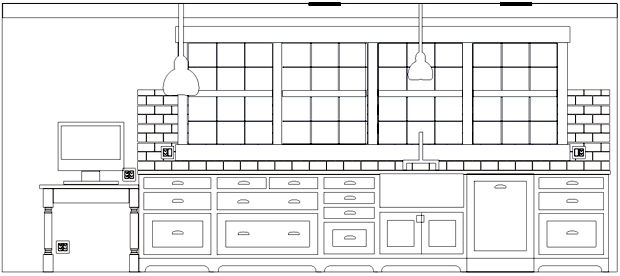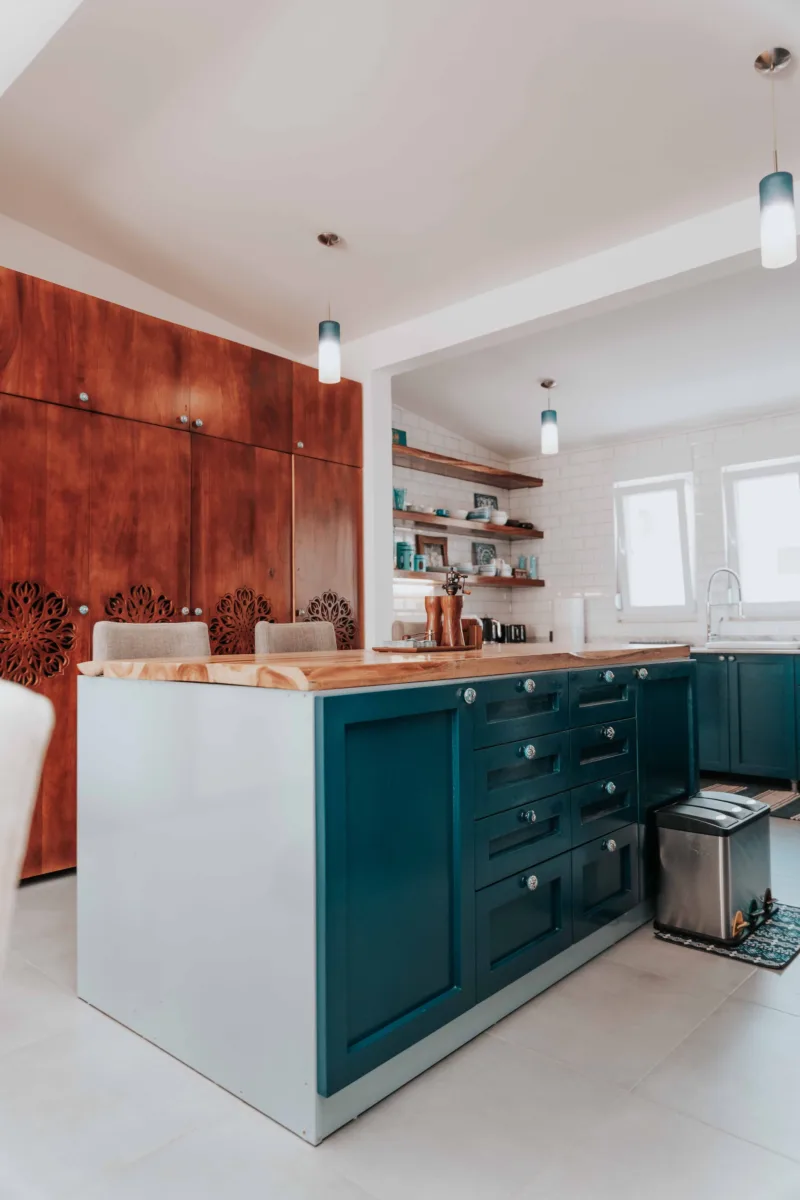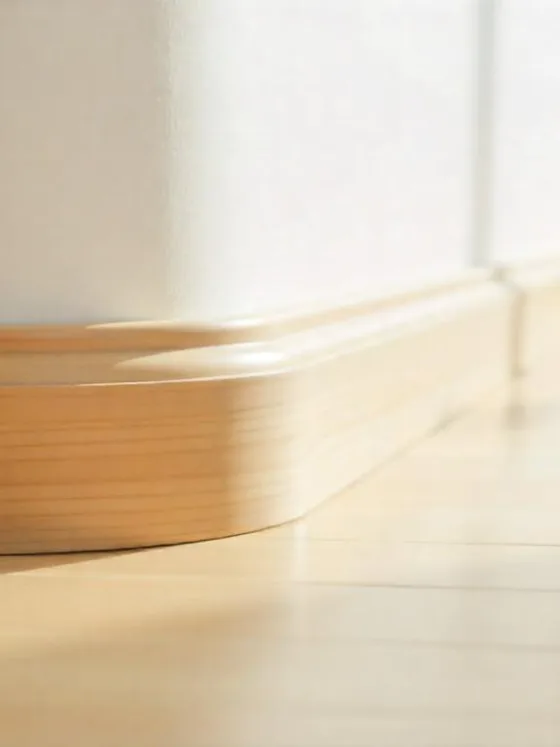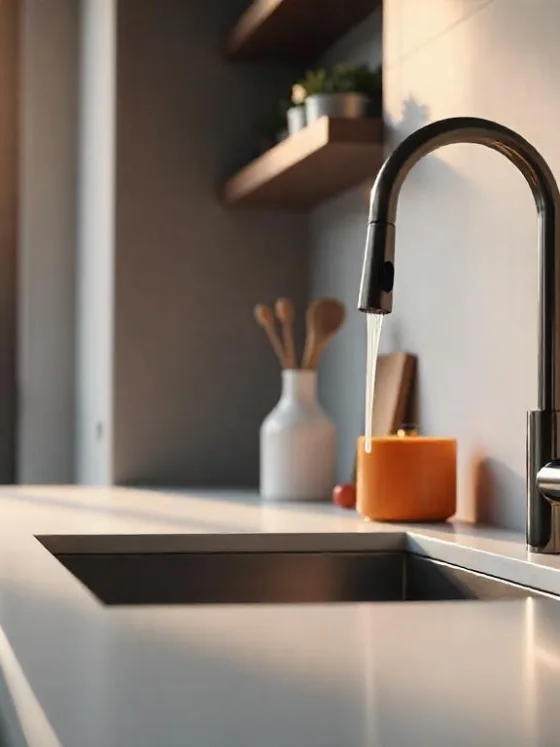Table of Contents Show
Introduction
The heart of any home is the kitchen, and at its core are the kitchen cabinets. More than just storage spaces, they contribute significantly to the overall aesthetic appeal and functionality of your kitchen.
From housing your dinnerware to hiding your waste bins, cabinets play a pivotal role in maintaining an organized and efficient kitchen.
Now, when it comes to choosing kitchen cabinets, one size doesn’t fit all. This is where custom-built cabinets come into play.
Tailored to your specific needs and style preferences, these cabinets can truly transform your kitchen into a space that resonates with your personality and lifestyle.
Be it maximizing storage in a small kitchen or creating display cases for your vintage china collection, custom-built cabinets give you the flexibility to design every nook and corner to perfection.
In this article, we will guide you through the process of creating stunning custom-built kitchen cabinets. You’ll hear inspiring stories of DIY enthusiasts who successfully renovated their kitchens, learn about key factors to consider when designing your cabinets and gain insights into various stages of cabinet construction and installation.
We will also share essential tips for building your own kitchen cabinets, provide recommendations for budget-friendly projects, suggest valuable resources for further learning, and discuss the advantages of sharing your projects within woodworking communities.
So let’s dive right in!
The Inspiring Story Behind a Stunning Kitchen Transformation
When Mr. Project and Project Girl embarked on the ambitious journey of renovating their California house, the kitchen posed a particularly exciting challenge. The allure of custom-built kitchen cabinets beckoned, promising an aesthetic upgrade and a tailored fit for their lifestyles. This tale of transformation began with a vision to create a space where both functionality and personal style harmoniously converged.
Designing the Perfect Cabinets for Your Kitchen
Key factors in kitchen cabinet design:
- Space Optimization: One of the first considerations for Mr. Project was to assess the kitchen’s spatial layout. He meticulously measured each nook to ensure that the new cabinets would maximize storage without overwhelming the room.
- Aesthetic Harmony: Since cabinets are one of the most visible elements in any kitchen, Mr. Project and Project Girl made sure their design choices complemented the overall style of their home. They selected materials and finishes that echoed their personal taste while maintaining a timeless appeal.
- Functional Requirements: Understanding that every household has unique needs, they identified specific functional prerequisites for their cabinetry. This included considerations for appliance integration, types of storage solutions like pull-out shelves or lazy Susans, and even special features such as built-in spice racks.
- Budget Consideration: While dreaming big, they remained grounded in reality by setting a clear budget for their project. This guided their material choices and influenced decisions on whether to splurge or save at various stages of the cabinet-building process.
- Ergonomics: The height and depth of cabinets can greatly impact user comfort. Mr. Project paid special attention to these details, ensuring that reaching for dishes or ingredients would be effortless and that countertops were set at an ideal height for prep work.
Through careful planning and a keen eye for detail, Mr. Project transformed his initial sketches into comprehensive blueprints. These plans were not just about aesthetics; they were about creating a kitchen that would cater to the couple’s everyday life while also being a showpiece worthy of admiration.
As this story unfolds, it serves as a testament to how with the right approach, anyone can turn their vision into reality. Crafting custom-built cabinets may seem like an intricate dance between creativity and practicality, but it is precisely this balance that leads to remarkable outcomes.
From Blueprint to Reality: Building and Installing Your Custom Cabinets
Embarking on a California house renovation, Mr. Project and Project Girl faced the ambitious task of designing and building kitchen cabinets from scratch. Despite Mr. Project’s initial lack of experience in this craft, they sought inspiration and practical knowledge through an array of books dedicated to kitchen cabinet construction.
Essential steps in the cabinet construction process:
- Measuring and Planning: Accurate measurements are key to ensuring that cabinets fit perfectly within the kitchen space.
- Selecting Materials: Choosing the right wood, hardware, and finishes can make all the difference in durability and aesthetics.
- Cutting Components: Precise cuts for panels, doors, and frames are critical for seamless assembly.
- Assembling the Cabinet Boxes: A careful alignment during assembly sets the stage for a professional look.
- Attaching Face Frames or Doors: These elements add character and functionality to your cabinets.
- Finishing Touches: Sanding, painting or staining, and sealing protect your cabinets while enhancing their appearance.
Pro tips for precise and secure cabinet installation:
- Leveling: Ensure all base cabinets are level before securing them to walls or each other.
- Anchoring: Use appropriate screws and anchors for your wall type to support the weight of cabinets and contents securely.
- Avoiding Common Pitfalls: Pre-drill holes to prevent wood splitting, and clamp components together when assembling for added precision.
Armed with these steps and tips along with a relentless drive for learning through doing, Mr. Project transformed their kitchen into a space that resonates with a personal touch and professional quality.
Essential Tips for Successfully Building Your Own Kitchen Cabinets
Embarking on a journey to craft your own kitchen cabinets can be a rewarding endeavor. It’s a chance to put a personal stamp on the heart of your home – the kitchen. Before diving into the sawdust and shavings, let’s talk shop about some foundational steps.
1. Ask Questions, Do Research, and Gather the Right Tools
Seek Guidance from Experienced Builders
The wisdom of those who’ve gone before you is invaluable. Skilled craftsmen have navigated the tricky waters of building kitchen cabinets and emerged with insights that can steer you clear of common pitfalls.
- Mentorship: Partnering with someone who has hands-on experience can accelerate your learning curve.
- Workshops: Local classes often provide not only instruction but also hands-on practice in a supportive environment.
- Online Forums: Engage with communities where sharing knowledge and advice is part of the culture.
Engage in Thorough Research
A deep dive into research lays the groundwork for success. The more you know before you measure once and cut twice, the better your chances are of achieving results that make you proud.
- Books: Titles like “Build Your Own Kitchen Cabinets” offer step-by-step guidance, while “Trim Carpentry and Built-Ins” can help refine your finishing touches.
- Videos: Visual learners will find a treasure trove of tutorials online that demonstrate techniques and provide visual cues for each step of the process.
Acquiring Essential Tools
Equipping yourself with the right tools is about more than just having a hammer and nails at your disposal. Precision tools contribute to precision results.
- Measuring Instruments: Accurate tape measures, rulers, and angle finders ensure that each piece fits just right.
- Cutting Tools: A reliable table saw, miter saw, or circular saw can make or break your build.
- Joinery Gear: Quality clamps, jigs, and biscuit joiners help secure joints for long-lasting durability.
Remember, curating your toolkit doesn’t mean breaking the bank. For instance, when considering options to choose the best modular kitchen cabinets for your space and budget, similar principles apply: quality matters but so does affordability. Seek out rental options or second-hand deals to keep costs down without compromising on capability.
By asking pointed questions, immersing yourself in research, and thoughtfully acquiring tools for cabinet building, you’ll lay a solid foundation for this ambitious project. As you move forward, remember that each step builds upon the last – from understanding basics to applying complex techniques – as you transform raw materials into bespoke cabinetry that elevates both form and function in your kitchen space.
2. Work Smartly, Plan Ahead: Efficiency and Organization in Cabinet Building
When it comes to building kitchen cabinets, being efficient and organized can make a world of difference. Here are some strategies to help you work smarter and reduce mistakes:
Map Out Your Steps
Before you start cutting any wood, take the time to visualize the entire process from beginning to end. Create a timeline that outlines each step, including:
- Selecting the right materials
- Taking accurate measurements
- Cutting the pieces
- Assembling everything together
- Installing the finished cabinets
Having a clear plan in place will keep you focused and prevent unnecessary backtracking.
Organize Your Workspace
A cluttered workspace can slow you down and lead to misplaced tools. To stay organized:
- Give each tool a designated spot where it belongs
- Arrange your workspace so that everything is within easy reach
- Take a few minutes at the end of each day to tidy up
By keeping your tools and materials organized, you’ll be able to work more efficiently and avoid frustration.
Measure Twice, Cut Once
This old saying holds true in cabinet-making. Taking accurate measurements is crucial for a proper fit. Remember:
Double-check your measurements before making any cuts.
It’s better to spend a few extra minutes verifying your numbers than to waste time and material on mistakes.
Batch Processing
Whenever possible, try to tackle similar tasks together. For example:
- If you have multiple pieces that need to be cut to the same length, do them all at once.
- If you’re drilling holes, do them in batches rather than one at a time.
Working this way allows you to get into a rhythm and complete tasks more efficiently.
Jigs and Templates
For repetitive cuts or complex shapes, using jigs and templates can be a game-changer. These are pre-made guides that help you achieve consistent results. Benefits include:
- Saving time by eliminating the need to measure and mark each piece individually
- Ensuring that all your cabinets have the same dimensions
Investing a little time upfront to create these tools will pay off in the long run.
Anticipate Challenges
No matter how well you plan, there’s always a chance of running into unexpected issues. By thinking ahead and considering potential challenges, you can:
- Identify possible problems before they happen
- Come up with alternative solutions or workarounds
Having a contingency plan in place will help you stay on track even when things don’t go according to plan.
By incorporating these strategies into your cabinet-building project, you’ll discover that careful planning and an organized approach lay the foundation for a smoother construction experience.
When you embark on the journey of building kitchen cabinets, you’re not just crafting storage; you’re honing life skills—chief among them, adaptability and patience. The path to creating custom cabinets is rarely a straight line; it zigs and zags with unexpected challenges that require a steady hand and a calm mind.
Troubleshooting Unexpected Issues
When faced with unexpected issues during cabinet building, follow these steps to find solutions:
- Identify the Problem: Take a step back to assess what’s gone awry. Is it a measurement mishap, a material flaw, or perhaps a tool malfunction?
- Seek Solutions: Use your research skills to uncover potential fixes. Consulting books like “Build Your Own Kitchen Cabinets” can provide valuable insights.
- Ask for Advice: Never hesitate to reach out to seasoned builders or online forums where you can pose questions and receive guidance.
Patience as the Foundation for Professional Results
Practicing patience throughout the cabinet-building process is key to achieving high-quality results:
- Embrace the Process: Understand that each setback is an opportunity to learn and improve your technique.
- Quality Takes Time: Rushing can lead to mistakes; taking your time ensures each component fits perfectly and functions flawlessly.
- Stay the Course: Remember why you started—envisioning your dream kitchen with every panel you perfect and every joint you join.
Building kitchen cabinets is more than assembling wood—it’s about cultivating resilience. By asking questions, researching thoroughly, acquiring tools for cabinet building, being adaptable, and being patient, you lay the groundwork for not only beautiful cabinetry but also invaluable personal growth.
4. Embracing Problem-Solving as a Cabinet Maker
Building kitchen cabinets often put your problem-solving skills to the test. When you find yourself facing an unexpected knot in the wood or a measurement that just doesn’t add up, it’s your creative mindset that will steer you through these rough waters. Consider each snag not as a setback but as an opportunity to learn and refine your craft.
How to Improve Your Problem-Solving Skills as a Cabinet Maker
Here are some ways you can enhance your problem-solving abilities in the world of cabinet-making:
- Cultivate Creativity: Encourage yourself to think outside the box. If a particular tool isn’t available, is there something else on hand that could achieve a similar result? Sometimes the best solutions come from unlikely places.
- Persistence Pays Off: When dealing with intricate woodworking projects like cabinet making, persistence is key. If one approach doesn’t work, don’t hesitate to try another path. It’s this determination that transforms good craftsmen into great ones.
- Lean on Your Resources: Remember that asking questions and researching are your best allies. Reach out to fellow builders or dive into trusted resources—both print and digital—to find alternative techniques or tools for cabinet building.
By nurturing these problem-solving instincts, you’ll become more adept at handling whatever challenges come your way. Building kitchen cabinets becomes less daunting and more of an engaging puzzle to be solved, piece by piece. Keep in mind that every master was once a beginner, and every challenge you overcome now adds to your expertise for future projects.
Transforming Your Kitchen on a Budget: A Cost-Effective Cabinet Project
Embarking on a kitchen remodel doesn’t have to drain your savings. Take inspiration from the ingenuity of Mr. Project and the Project Girl, who revamped their kitchen cabinets with finesse without breaking the bank, all under $2,500. Achieving a cost-effective cabinet project is quite feasible with a few insider tips and a dash of creativity.
Practical Tips for a Budget-Friendly Cabinet Renovation
Here are some practical tips to help you achieve a budget-friendly cabinet renovation:
- Select Affordable Materials: Opt for budget-friendly wood species or consider alternative materials like MDF (Medium Density Fiberboard) that can be painted for a custom look.
- Simplify Design Elements: Crafting cabinets with clean, simple lines not only lends a timeless aesthetic but also cuts down on labor and material costs.
- Repurpose When Possible: If existing cabinet boxes are in good shape, refresh them with new doors or hardware instead of building from scratch.
- Shop Deals and Discounts: Keep an eye out for sales at local hardware stores or online marketplaces for discounted materials.
- DIY Where You Can: Taking on tasks such as painting or assembly yourself can save on labor expenses.
By following these practical steps, you too can navigate towards a stylish yet affordable kitchen transformation. With careful planning and resourceful choices, the dream of custom-built cabinets that don’t cost the earth is within reach.
Cabinet Making 101, Design, Build, and Install | YouTube video
Recommended Books for Further Exploring the Art of Cabinet Building
For those who are keen on honing their craft in cabinet building, a wealth of knowledge is just a page-turn away. Diving into recommended books can significantly enhance your skills and understanding of this meticulous art form. Here are some exceptional resources that stand out:
- “Build Your Own Kitchen Cabinets“ by Proulx offers an accessible entry point for beginners. This book breaks down complex processes into manageable steps, ensuring even the greenest woodworker can follow along.
- Danny Proulx also brings us “Trim Carpentry and Built-Ins“. It’s a treasure trove of insights for those looking to add elegant finishing touches to their custom cabinets.
- Taunton’s “Building Kitchen Cabinets“ part of the ‘For Pros By Pros’ series, guides readers through the finer points of cabinetry with detailed illustrations and professional tips.
These resources serve as trusted companions on your journey to mastering cabinet construction. Each book provides unique perspectives and step-by-step instructions that cater to varying skill levels, from novices to experienced builders.
If you find yourself contemplating the broader choices in kitchen design, such as deciding between modular or traditional setups, it might be helpful to explore How to Choose the Perfect Kitchen for Your Home: Modular vs Traditional. While this link emphasizes overall kitchen layouts, it complements the detailed craftsmanship focus found within these recommended reads.
By delving into these top-notch resources, you’ll gain not just technical prowess but also a deeper appreciation for the finesse involved in creating beautiful and functional kitchen cabinets. The artistry of woodworking becomes more apparent with each chapter read and every project completed.
Fostering Creativity and Community: The Power of Sharing Your Cabinet Projects
When you dive into the world of custom cabinet projects, community engagement can become a cornerstone of your experience. Sharing cabinet projects online isn’t just about showcasing your work—it’s a gateway to collaboration, knowledge, and mutual support. Here are some compelling reasons to get involved in woodworking communities:
- Feedback: Receiving constructive criticism helps refine your skills. Fellow DIYers can spot areas for improvement you might have missed.
- New Perspectives: Seeing how others tackle similar projects provides fresh ideas and innovative solutions to common challenges.
- Motivation: Sharing progress and successes creates accountability and motivation to push through the tough phases of a project.
- Resource Sharing: Members often share tools, materials, and resources, making your project more cost-effective.
- Skill Development: Tips from seasoned woodworkers can elevate your techniques beyond what you might achieve solo.
Remember, these communities thrive on give-and-take relationships. As much as you learn from others, don’t hesitate to contribute your own insights and experiences. It’s this exchange of wisdom that enriches everyone’s craft.
Conclusion
Embarking on a kitchen transformation with custom-built cabinets may seem daunting, but it’s entirely within your reach. Remember the journey of Mr. Project and Project Girl who, armed with determination and a few good books, transformed their own kitchen into a stunning space.
Embrace the process as an opportunity to learn, grow, and create something truly personal for your home. From the design phase to the final installation, every step is a chance to infuse your unique style and needs into your kitchen – making it more functional, beautiful, and truly yours.
So why wait? Start dreaming about your ideal kitchen, gather those tools, and dive into the exhilarating world of cabinet making. This hands-on project not only leads to a transformed kitchen but also nurtures creativity, patience, and problem-solving skills.
Remember: every master was once a beginner. Your kitchen transformation journey begins today!
FAQs(Frequently Asked Questions)
Key factors in kitchen cabinet design include space optimization, efficient organization, and careful planning.
The essential steps in the cabinet construction process include measuring and planning, precise and secure installation, and being adaptable and patient when navigating challenges.
You can enhance your problem-solving abilities by embracing problem-solving as a cabinet maker, troubleshooting unexpected issues, and practicing patience throughout the cabinet-building process.
Embarking on a kitchen remodel doesn’t have to drain your savings. You can achieve a budget-friendly cabinet renovation by following practical tips and recommended books for further exploring the art of cabinet building.
Some pro tips for precise and secure cabinet installation include ensuring all base cabinets are level before securing, using jigs and templates for repetitive cuts or complex shapes, and anticipating challenges during the installation process.
When building your own kitchen cabinets, it’s important to ask questions, do research, gather the right tools, work smartly and plan ahead for efficiency and organization, and be adaptable and patient when navigating challenges along the way.
Citation
- Proulx, Danny. 2003. Build Your Own Kitchen Cabinets. Penguin.
- DeKorne, Clayton. 2002. Trim Carpentry and Built-ins. Newtown: Taunton Press.
- Schmidt, Udo. 2003. Building Kitchen Cabinets. Taunton Press.
- Woodworking With Wes. 2023. ‘Cabinet Making 101, Design, Build And Install.’ YouTube video, 12:00. https://www.youtube.com/watch?v=x2BhbI_wbmU. Accessed January 3, 2024.













